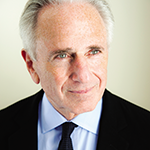Despite new therapeutics, progress for patients has virtually stalled over the past 10 years. With all available chemical and biological DMARDs, the expectation is that approximately 60% of patients will improve by 20% (ACR20), 40% will improve by 50% (ACR50), and 20% will improve by 70% (ACR70). If expressed by the useful DAS (disease activity score), by reduction from a high to a sustained level of low, or less commonly, remission level in about 50% of treated patients. Of course, these numbers are crude approximations of benefit that depend on many factors, e.g. worse for long disease duration, impaired physical function, structural damage and high disease activity, but also influenced by age, smoking history and high body mass index.
With $25 billion sales annually and with an aging population, it is clear that commercial success has outstripped health care resources. The mismatch is beginning to impact on willingness to pay and impedes research into new and existing expensive medicines. With the advent of ‘biosimilars,’ there is an opportunity to address the high cost of therapy. Regrettably unlike the dramatic falls in price when small chemical ‘drugs’ go off patent (90% or so), the early indications in Europe, where the first anti-TNF biosimilar mimicking infliximab are marketed as Inflectra (by Hospira) and as Remsima (by Celltrion), the cost saving is relatively small.
What Are The Possible Solutions?
Is there a path forward? Might combination therapy in RA be the solution?
Editor’s note: In this article, the authors discuss many options and the evidence for them, including:
- The combination of low dose methotrexate and anti-TNF;
- Angiogenesis;
- Targeting tissue damage pathways directly;
- Antigen-specific therapy;
- Potential combination of TNF and IL17 blockade; and
- Targeting inhibitory receptors and regulatory T cells.
The authors end with a call to action: “[I]t is clear that the revolution is incomplete; it has not resulted in ‘cures.’ As a therapeutic community we need to pick up the challenge again and get the job completed.”
Excerpted and adapted from:
Feldmann M, Maini RN. Perspectives from masters in rheumatology and autoimmunity: Can we get closer to a cure for rheumatoid arthritis? Arthritis Rheumatol. 2015 Sep;67(9):2283–2291.
